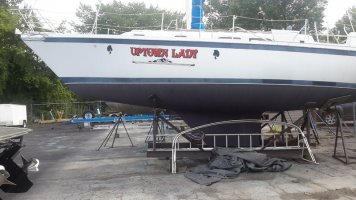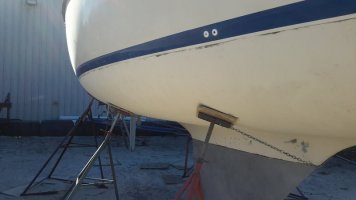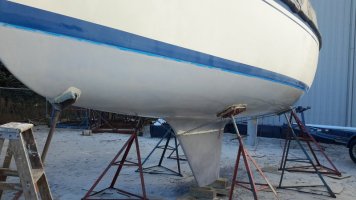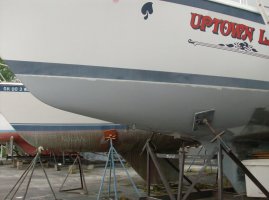Fork from another thread.
I need to put a bottom on Makana, and want to put it on the most solid base I can. Surveyor suggested stripping the existing bottom paint off and putting new primer/base-coat directly on the barrier rather than layering on top of existing paint.
What's the best way to do that? I'd like to try to satisfy three conflicting goals
-- not compromise the existing barrier coat
-- not spend a fortune
-- not run afoul of environmental regs (not sure what is allowed here in Washington)
From the other thread, the choices are blast, sand or strip. The surveyor mentioned that there are some chemical strippers that he felt would do a good job without damaging the barrier coat, and without creating a mound of sanding dust, but didn't provide any specifics.
Anyone have hints, experiences or best practices?
Thanks!
I need to put a bottom on Makana, and want to put it on the most solid base I can. Surveyor suggested stripping the existing bottom paint off and putting new primer/base-coat directly on the barrier rather than layering on top of existing paint.
What's the best way to do that? I'd like to try to satisfy three conflicting goals
-- not compromise the existing barrier coat
-- not spend a fortune
-- not run afoul of environmental regs (not sure what is allowed here in Washington)
From the other thread, the choices are blast, sand or strip. The surveyor mentioned that there are some chemical strippers that he felt would do a good job without damaging the barrier coat, and without creating a mound of sanding dust, but didn't provide any specifics.
Anyone have hints, experiences or best practices?
Thanks!




